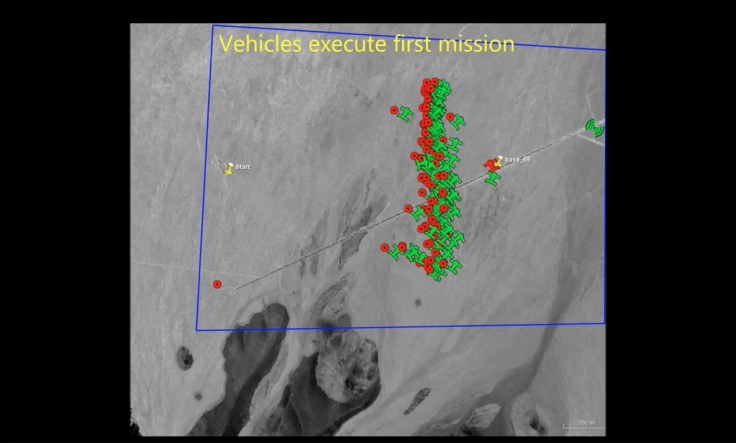Military Drones: Department Of Defense Releases Footage Of Swarm of Mini-Drones

The skies over the United States were a little more crowded than usual following a test by the Department of Defense that sent more than 100 drones scattering across the sky, according to a report from the BBC.
A total of 103 of the miniature, unmanned flying vehicles were released from a trio of Three F/A-18 Super Hornets, a popular Navy fighter aircraft. Called Perdix drones, the flyers have a wingspan of just 12 inches and move entirely autonomously—no human control required.
Footage of the devices in action from October 2016, taken from Naval Air Weapons Station China Lake, was recently released by the Department of Defense. In it, the drones can be seen being released into the sky and swarming together, making use of the collective brain that controls them.
The drones can bee seen performing four missions over the course of their test flight: three separate attempts at hovering over targets and a fourth test that involved the crafts forming a 100-meter-wide circle in the air.
According to a press release from the Department of Defense acknowledging the tests, the demonstration was designed to showed off the Perdix drones’ collective decision-making, flying formations, and self-healing capabilities.
The drones communicate with one another to collectively decide when a mission is complete before fly on to the next task. If any of the drones fall out or are taken out by exterior forces—several drones crash over the course of the test—the group rearranges to cover the absence.
The original design for the drones came from students at the Massachusetts Institute of Technology, who designed them to be lightweight, functional and inexpensive. Perdix drones feature a biplane-style build, which cuts down on wingspan and weight, with a rear-facing push propeller.
The wings are made of carbon fiber and the body of the craft from kevlar composite. Despite their light build, the crafts are able to capable of withstand ejection at speeds of up to Mach 0.6 and survive temperatures as low as 14 degrees.
While the test in October was the first recorded run shared with the public by the Department of Defense, the Washington Post offered the first glimpse at the Perdix drones in 2016, when it secured footage of the unmanned aircraft in action from the Pentagon’s Strategic Capabilities Office. The test footage was from 2014, meaning the drone project has been years in the making.
© Copyright IBTimes 2024. All rights reserved.











